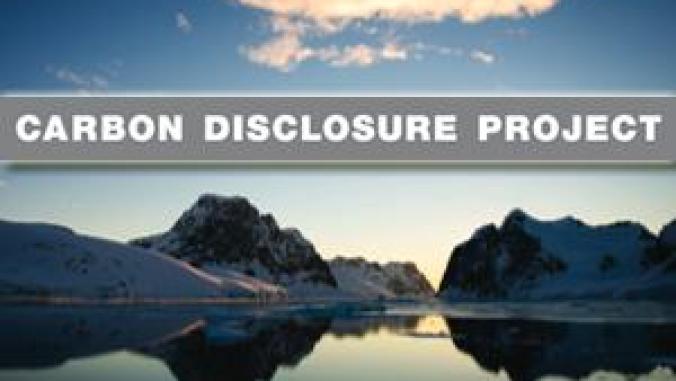Global Agencies Want Huge Leap in Fuel Economy, EPA Revisits Calif. Waiver
The day before the U.S. Environmental Protection Agency begins hearings on its decision to prevent California from regulating tailpipe greenhouse gas emissions, global agencies called on automakers around the world to boost fuel economy by 50 percent to fight climate change.

The day before the U.S. Environmental Protection Agency begins hearings on its decision to prevent California from regulating tailpipe greenhouse gas emissions, global agencies called on automakers around the world to boost fuel economy by 50 percent to fight climate change.
The International Energy Agency, United Nations Environment Programme, International Transport Forum and FIA Foundation unveiled the '50 by 50' Global Fuel Economy Initiative (GFEI) at the Geneva Motor Show on Wednesday. The four international agencies released a road map for cutting vehicle emissions 50 percent by 2050, when its research shows the worldwide car fleet will have tripled -- with 80 percent of growth stemming from developing countries.
The initiative's 2009 road map calls for the development of regional alliances in Europe, North America, Latin America and Asia; launching four national pilot programs to test the development of nationwide fuel economy policies; creating a fuel economy database and information clearinghouse; and linking the initiative to the G8 and U.N. processes.
Meanwhile, the U.S. EPA begins hearings today on its decision to deny California the authority to regulate tailpipe emissions. The agency's discretion in reviewing the waiver request is very narrow, said Bill Becker, executive director of the National Association of Clean Air Agencies.
"If California meets three very specific criteria, under section 209b under the Clean Air Act, which we believe the state has demonstrated, the EPA must approve the state's waiver," Becker said during a conference call with reporters yesterday. "Once the waiver is granted ... any state with an approved plan may adopt and enforce California's standards provided the standards are identical to California's and sufficient lead time is provided."
Arguments against the waiver include: regulating fuel economy is the same as regulating greenhouse gas emissions; the technologies aren't available; model offerings will be reduced; the costs are too high for an ailing industry; and California's standards (36.8 miles per gallon by 2016) would produce little environmental benefit over the proposed fuel efficiency standards (35 mpg by 2020.)
Jim Kliesch, a senior engineer with the Union of Concerned Scientists (UCS), said utilizing better engines and technologies, improved air conditioning systems, lightweight materials and superior aerodynamics can boost fuel economy if deployed across a fleet.
"A recent UCS analysis concluded that outfitting a minivan with a suite of technologies to meet the 2016 Clean Air requirements would cost approximately $700," Kliesch said. "Assuming a gasoline price of $2.50 a gallon, this technology would pay for itself in less than three years and would save the consumer nearly $1,800 over the life of the vehicle."
Demand for the larger gas-guzzling trucks and SUVs that had been the bread and butter of the industry for years plunged in 2008 as fuel prices skyrocketed, said Adam Lee, president of Lee Auto Malls in Maine. On the other side of the spectrum, consumers added their names to waiting lists for compact, fuel efficient vehicles, such as the Toyota Prius.
"I think we need this waiver to protect our air and water, which is really at the heart of it," Lee said. "But we also need this waiver to force the automakers to produce cars that consumers want."
The International Energy Agency, United Nations Environment Programme, International Transport Forum and FIA Foundation unveiled the '50 by 50' Global Fuel Economy Initiative (GFEI) at the Geneva Motor Show on Wednesday. The four international agencies released a road map for cutting vehicle emissions 50 percent by 2050, when its research shows the worldwide car fleet will have tripled -- with 80 percent of growth stemming from developing countries.
The initiative's 2009 road map calls for the development of regional alliances in Europe, North America, Latin America and Asia; launching four national pilot programs to test the development of nationwide fuel economy policies; creating a fuel economy database and information clearinghouse; and linking the initiative to the G8 and U.N. processes.
Meanwhile, the U.S. EPA begins hearings today on its decision to deny California the authority to regulate tailpipe emissions. The agency's discretion in reviewing the waiver request is very narrow, said Bill Becker, executive director of the National Association of Clean Air Agencies.
"If California meets three very specific criteria, under section 209b under the Clean Air Act, which we believe the state has demonstrated, the EPA must approve the state's waiver," Becker said during a conference call with reporters yesterday. "Once the waiver is granted ... any state with an approved plan may adopt and enforce California's standards provided the standards are identical to California's and sufficient lead time is provided."
Arguments against the waiver include: regulating fuel economy is the same as regulating greenhouse gas emissions; the technologies aren't available; model offerings will be reduced; the costs are too high for an ailing industry; and California's standards (36.8 miles per gallon by 2016) would produce little environmental benefit over the proposed fuel efficiency standards (35 mpg by 2020.)
Jim Kliesch, a senior engineer with the Union of Concerned Scientists (UCS), said utilizing better engines and technologies, improved air conditioning systems, lightweight materials and superior aerodynamics can boost fuel economy if deployed across a fleet.
"A recent UCS analysis concluded that outfitting a minivan with a suite of technologies to meet the 2016 Clean Air requirements would cost approximately $700," Kliesch said. "Assuming a gasoline price of $2.50 a gallon, this technology would pay for itself in less than three years and would save the consumer nearly $1,800 over the life of the vehicle."
Demand for the larger gas-guzzling trucks and SUVs that had been the bread and butter of the industry for years plunged in 2008 as fuel prices skyrocketed, said Adam Lee, president of Lee Auto Malls in Maine. On the other side of the spectrum, consumers added their names to waiting lists for compact, fuel efficient vehicles, such as the Toyota Prius.
"I think we need this waiver to protect our air and water, which is really at the heart of it," Lee said. "But we also need this waiver to force the automakers to produce cars that consumers want."




